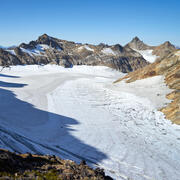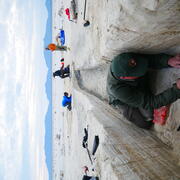Snow and Avalanches
Mountain snowpack is important in providing spring melt water to down-slope ecosystems. However, snowpack can also threaten humans and ecosystems when destructive avalanches are triggered. The Ecosystems Land Change Science Program is investigating avalanche frequency and magnitude and assessing climatic and human drivers of avalanches to improve public safety and mitigate impacts to society.












